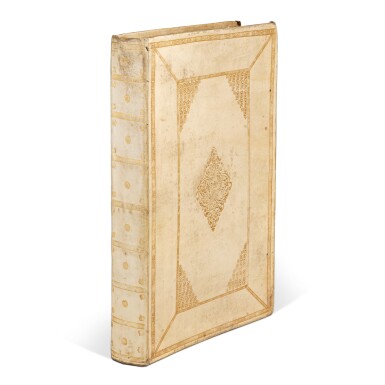The John Golden Library: Book Illustration in the Age of Scientific Discovery
The John Golden Library: Book Illustration in the Age of Scientific Discovery

Cellarius, Andreas | An outstanding example of atlas production from the Golden Age of Dutch cartography
Auction Closed
November 22, 05:54 PM GMT
Estimate
100,000 - 150,000 USD
Lot Details
Description
Cellarius, Andreas
Harmonia Macrocosmica seu atlas universalis et novus. Amsterdam: J. Jansson, 1661
Folio (505 x 325mm). Letterpress title with woodcut printer's device, engraved allegorical frontispiece and 29 double-page engraved celestial charts, handcolored with frames in grisaille and heightened with gold, on guards, 4 engraved and 2 woodcut text diagrams, floriated woodcut initials, arabesque woodcut tailpieces; tiny ink burn to one plate, a few plates with tape strengthening where they have begun to separate from guards, occasional minor rubbing or finger soiling to margins of text. Contemporary gilt-paneled vellum, covers with large central arabesque inside a central panel with gilt corner tools, flat spine gilt in 8 compartments; silk ties lacking, a little rubbed.
First edition, second issue of the only celestial atlas published in the Netherlands and an outstanding example of atlas production from the Golden Age of Dutch cartography. Unlike the later celestial atlases, the Cellarius charts demonstrated various ancient and contemporary cosmological ideas, rather than just the names and positions of the stars. The purpose of the book was to assess different attempts to discover the underlying harmony of the universe.
The charts represent the highest levels of seventeenth-century astronomical thought, with the diagrams showing aspects of the three great theories on the nature of the universe: the Ptolemaic, the Copernican and the Brahean. Strangely, Cellarius remains a somewhat mysterious figure, with little known other than that he was the rector of the Latin school of Hoorn and a gifted mathematician.
REFERENCE:
Koeman IV, Cel 2; Snyder, Oude Hemelkaarten p.115f; Whitfield p.101: "The most elaborate and famous celestial atlas of the seventeenth century was issued by an author unknown to the history of astronomy."
